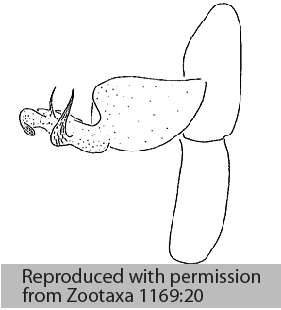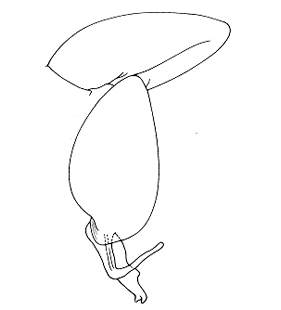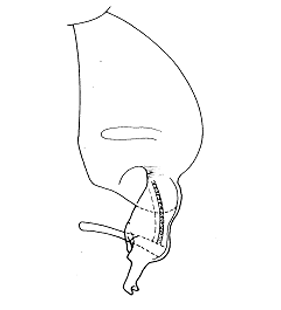Harpactea cressa Brignoli, 1984
Beschreibung
Männchen
Embolus querlaufend, an der Basis gebogen. Konduktor zweigeteilt mit einer grossen lamellaartigen Platte und einem sehr dünnen schmalen Auswuchs. Prosoma rötlich-braun. Prosoma 1.8 mm lang. Sternum gelb. Augen: vordere weniger als einen Durchmesser voneinander entfernt. Beine: Femora I-II rötlich braun, alle andere Glieder sowie Beine III-IV gelb, Femur I mit 2 oder 3 Stacheln, Femur II mit 2 Stacheln, Femur III mit 3 bis 5 Stacheln, Femur IV mit 4 bis 7 Stacheln. Opisthosoma gelblich.
Körperlänge Männchen: 3.4 mmWeibchen
Vulva mit langen und dünnen Spermatheken, hinteres Divertikilum nach oben gebogen. Prosoma 1.2-1.6 mm lang.
Zusätzliche Informationen
Im Laub unter Quercus coccifera, Pinienwäldern, nahe beim Meer. Höhenlage bis 1450 m.
Verbreitung
Phänologie
| Jan | Feb | Mar | Apr | May | Jun | Jul | Aug | Sep | Oct | Nov | Dec |
 |  |
Abbildungen
Verbreitungsnachweise
"No reference" bedeutet nicht, dass die Art in diesem Land nicht vorkommt, sondern dass wir die Referenz hierfür noch nicht eingefügt haben. Wir arbeiten daran.
Literatur
Brignoli P M (1984b) Ragni di Grecia XII. Nuovi dati su varie famiglie (Araneae). Revue Suisse de Zoologie 91: 281-321 ![]()
Chatzaki M, Arnedo M A (2006) Taxonomic revision of the epigean representatives of the spider subfamily Harpacteinae (Araneae: Dysderidae) on the island of Crete. Zootaxa 1169: 1-32 ![]()
Le Peru B (2011) The spiders of Europe, a synthesis of data: Volume 1 Atypidae to Theridiidae. Mémoires de la Société Linnéenne de Lyon 2: 1-522 ![]()
WSC (2025) World Spider Catalog. Version 26. Natural History Museum Bern, online at http://wsc.nmbe.ch (28.2.2025) doi: 10.24436/2 ![]()
Updates
| 30-04-2013 | Image insert |





